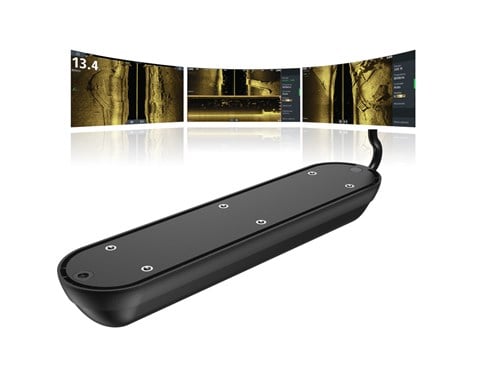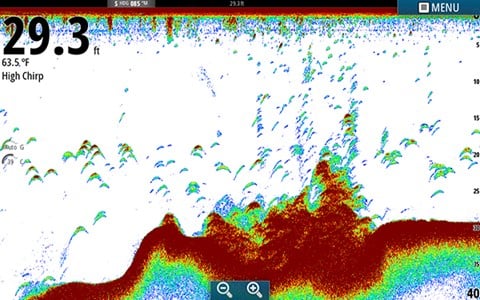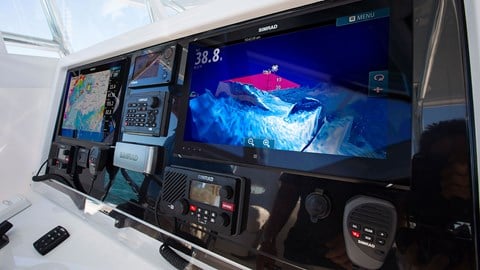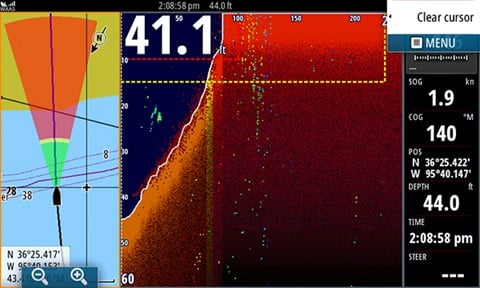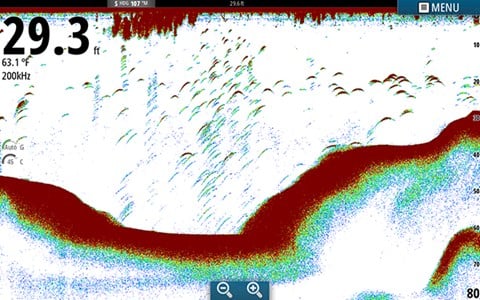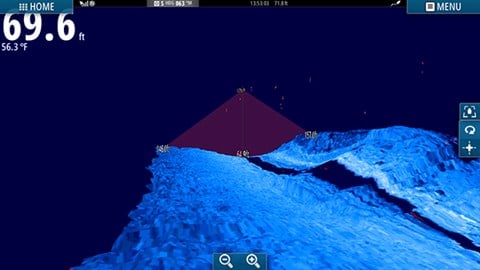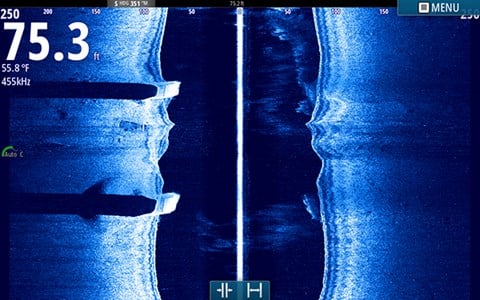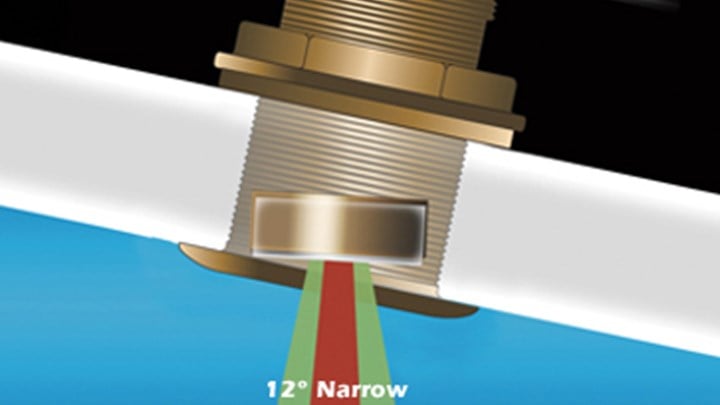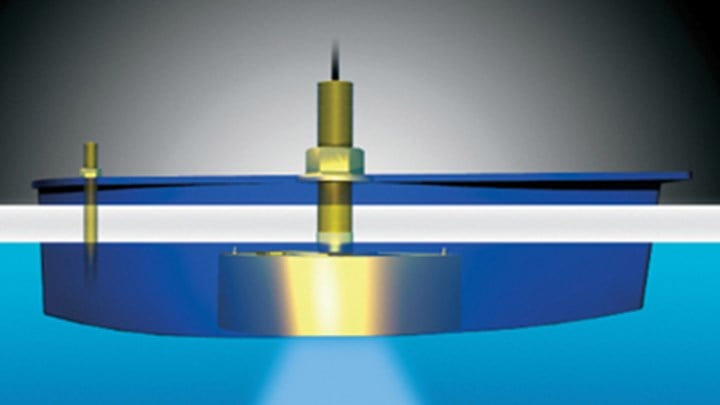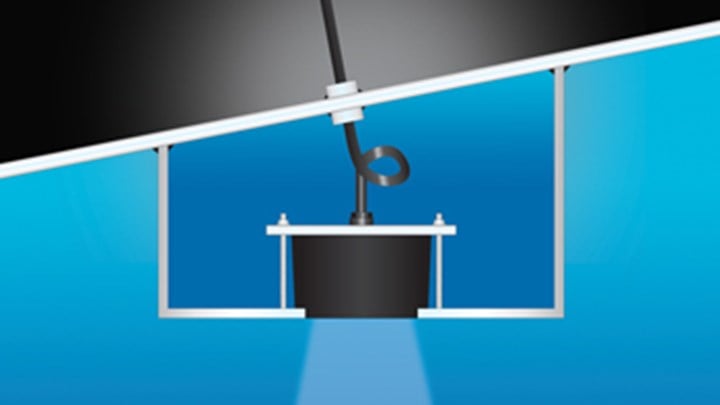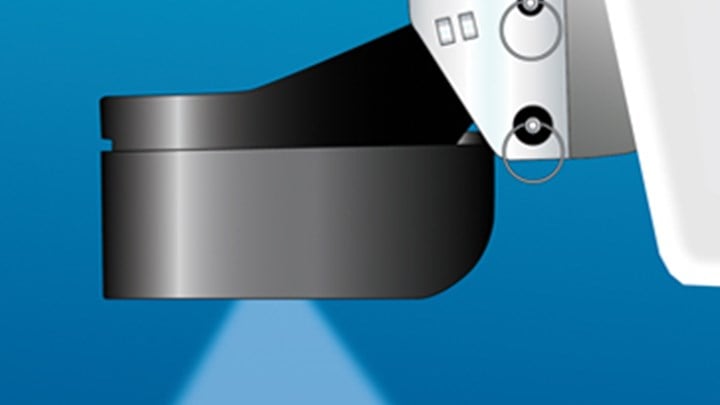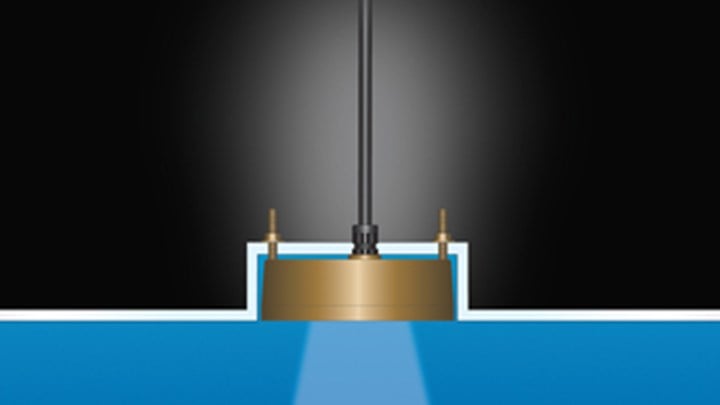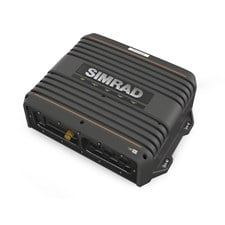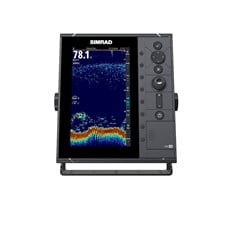This essential sonar technology is great for tracking depth, finding schools of baitfish, and displaying predator fish in the water column directly beneath your boat. Broadband sonar offers a traditional side-on echosounder view, with ‘fish arches’ formed as fish pass through the downward-facing sonar beam.
Broadband sonar relies on sonar 'pings' and echoes on a single frequency, dictated by your choice of transducer. Most transducers are designed to operate at one of the frequencies below, while 'dual frequency' transducers let you select either of two supported frequencies to best suit your current situation.
Available frequencies include:
- 50 kHz (Low Frequency)
High power, ideal for bottom tracking in deep water
- 83 kHz (Medium Frequency)
Wide coverage area, useful when searching for structure or tracking bait in shallower water
- 200 kHz (High Frequency)
High resolution, for the greatest image quality and easy fish tracking in shallow water
The Simrad Broadband Advantage
The more power a single-frequency echosounder can put behind its ping, the stronger the echoes received from the bottom and other submerged targets. That should mean greater depth penetration, and better target detection. However, more power also means more noise in the image – making it harder for you to identify targets on screen. Simrad Broadband sonar uses less power, but varies its ping in a way that actually puts more energy into the water overall. This means greater image quality, with less image noise than conventional single-frequency sounders.

